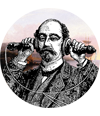How to create an Effective Conference Session
Conference presentations can be great tools for sharing information, best practices, and gaining recognition for your knowledge and experience. They can also be boring time-wasters that suck the life and livelihood from anyone unfortunate enough to have attended. The following information will help you plan for and design an effective, informational and enjoyable conference session.
Everyone can present
Everyone knows something relevant and valuable that they can turn into a conference session. The thought process I use is this: What have I observed people doing poorly (or not at all), that I know something about?
The only hard part is explaining in your session proposal why the knowledge or experience you hold is relevant and valuable. But don't worry, the bar is usually pretty low.
Be a Laser Beam, not a $2 Flashlight
Too often people try to cover everything in a presentation. Don't. Instead, your best bet for an interesting, useful and effective presentation is to concentrate on just one narrow topic. If you are talking about your youth media program only concentrate on one specific aspect of it: how you recruited volunteers, how you dealt with retention, or how you measured student achievement. Give a tiny bit of context (no more than 5 minutes), but then zoom in and get deep in just one part.
Save Show-and-tell for Kindergarten
A very common pitfall for conference sessions is being designed wholly around a show-and-tell: "This is my pet-rock/newt/youth media program. Isn't it great?!" Often-times, people will think that, because they've done something amazing, telling people what it is alone makes for a compelling presentation.
While stories and examples are the glue that holds your presentation together, they should be used only to illustrate and explain the fundamental information, advice, and lessons you want them to walk away with.
Define your Deltas
By the time a person leaves your presentation (assuming they haven't left early), how will your presentation have changed them? (Math-nerds call change "Delta" or use a triangle symbol.) The strongest types of change are actions: when your attendees leave, what will they do or do differently as a result of your session.
Defining your Deltas is the key to holding your presentation together and making it meaningful and effective no matter what happens: you may forget the handouts, have a broken projector, your co-presenters all get laryngitis, or receive an unforeseen schedule change. But by knowing exactly what lessons or information you want to get across ahead of time, you'll be able to be effective and flexible: concentrate on your outcomes, rather than the particular path you take to get there.
Be All Things to All People
When you are presenting, there is only one thing that matters to your audience: themselves. When thinking about your presentation, you want to convert your own individual experiences into universal truths. Sure, this is a broad leap, but that's exactly what people want. Unless you're a medical researcher or a rocket scientist, no one is expecting a meticulous, 10 year, peer-reviewed longitudinal study. Just tell people what worked and what didn't, and most importantly: why.
Perhaps the easiest way to make your presentation universal is to talk about process: what steps did you take to get the outcome you did. In thinking about those steps, how might someone else, in different circumstances or with different resources, do something similar?
Assume nothing, tell everything
If you have lessons to be learned, advice or recommendations, be sure to make them perfectly clear: put them in big bold letters, preface them with "this is really important" and make it clear to people: this is what I want you to know. While you as a presenter know what to expect during the presentation, your audience does not; important information can pass them by if you don't explicitly highlight it.
Highlighting your point is the difference between "My pet-rock is cute!" and "Pet rocks are attractive pets that every person should own."
And don't be afraid to give your strong opinion: if, in your experience, something is fundamentally necessary, or fundamentally didn't work, say it. Nothing in life may be an absolute, but 99% of the time is good enough.
Don't stretch the clock
For anyone who has ever been to their first conference session, they've probably been late to their second. When thinking about the length of your presentation, aim to use only 50% of the available time. Unless you area robot with a built-in chronometer, things will always take longer than expected due to technical issues, digressions, or that guy in the front row that asks you a new question every other sentence. Use the time remaining to answer questions---think of your presentation as setting the framework for the Q&A session to follow.
Other links for Presentation Skills:
Free Management Library: Basics of Presentation Skills: I nice short bulleted list of guidelines for presenting
Presentation Zen: A weblog on creating effective presentations.
Guy Kawasaki's 10/20/30 Rule of Powerpoint Presentations: A key lesson on why 99% of people who do owerPoint are wrong.










